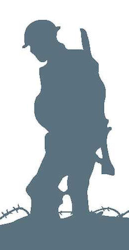Name
Robert Alfred Barnes
Conflict
First World War
Date of Death / Age
11/04/1917
19
Rank, Service Number & Service Details
Private
32292
Bedfordshire Regiment
2nd Bn.
Awards: Service Medals/Honour Awards
British War and Victory medals
Cemetery/Memorial: Name/Reference/Country
HENIN CRUCIFIX CEMETERY
Row A, Grave 43.
France
Headstone Inscription
Not Researched
UK & Other Memorials
Watford Borough Roll of Honour,
Christ Church Memorial, Watford
Pre War
Son of Robert Green and Leanora Jane (nee SKELCHER) BARNES of Watford.
His parents married 1894 in the Oxford district. Robert died 1932 in Watford aged 57, and was buried 2 June in North Watford Cemetery; Leanora died 1950 in Watford aged 73, and was buried 17 May, also in North Watford Cemetery.
Robert was born 26 September 1897 in either Oxford or Banbury, Oxon. He attended first Callowland Infants’ School, Watford; then Callowland Board School from 11 January 1904 to 27 November 1911. He resided in Watford.
On the 1901 Census, aged 3 he lived in Watford, with his parents and three siblings. On the 1911 Census, at school aged 13 he still lived in Watford, with his parents and three siblings.
Wartime Service
He enlisted in Bedford; was entitled to the Victory and British War medals, and was killed in action during the Battle of Arras – the first Battle of the Scarpe – an unsuccessful attack on the Hindenburg Line near Saint Martin-sur-Cojeul. This commenced on 9 April 1917 involving the entire Battalion. Orders received the night of 10 April ordered the Battalion to attack German lines either side of the River Cojeul the following morning. All Companies came under heavy enfilade machine gun fire.
Additional Information
There is an article about and a Death announcement for Robert in the West Herts and Watford Observer dated 12 May 1917; plus In Memoriams in the issues dated 13 April 1918 and 12 April 1919.
There is an In Memoriam for Alfred in the West Herts and Watford Observer dated 22 February 1919.
Unfortunately, Robert’s Service Record appears to be one that did not survive the World War Two bombing.
Acknowledgments
Sue Carter (Research) and Watford Museum (ROH on line via www.ourwatfordhistory.org.uk)



